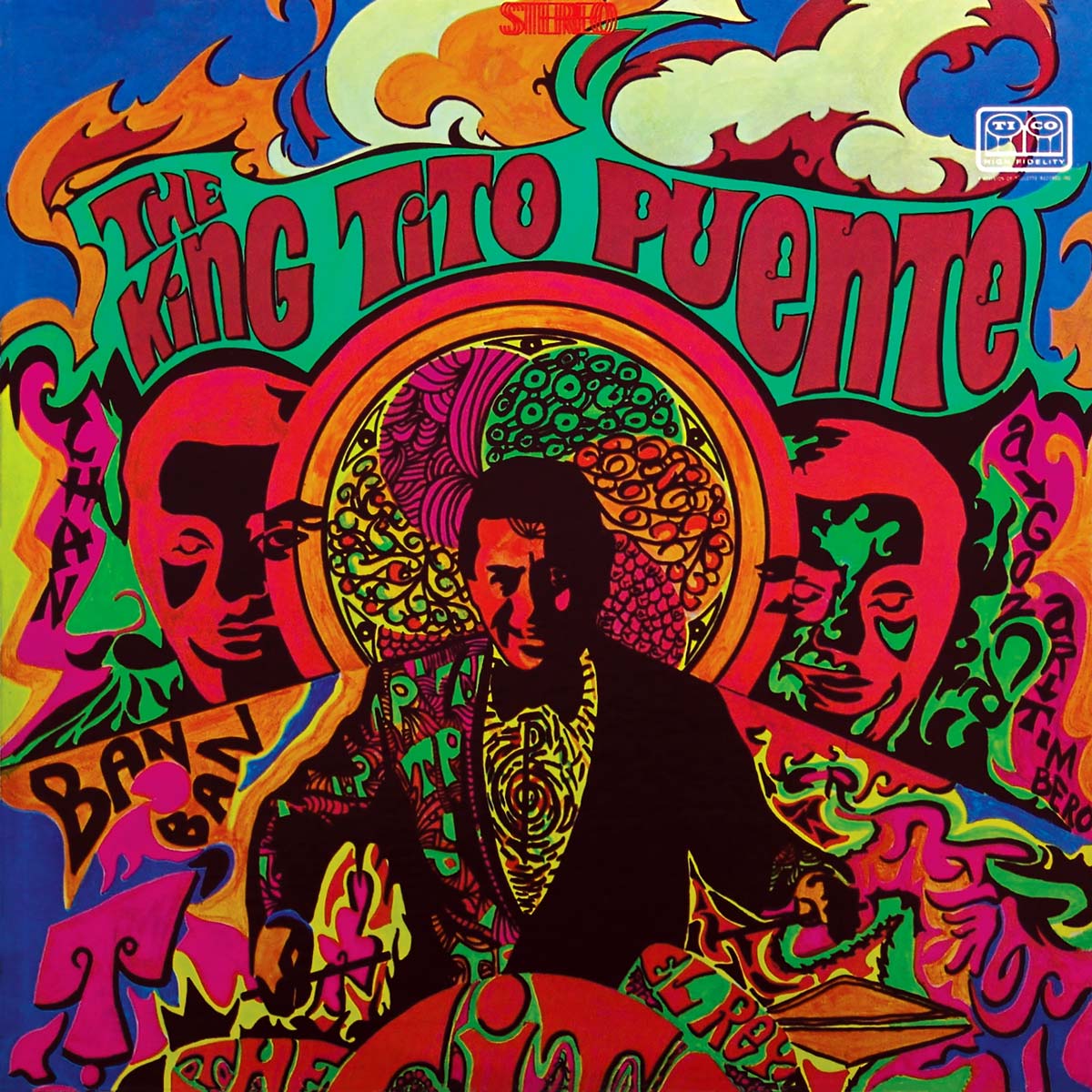
Rhythm is at the core of the classic LP Puente In Percussion. More often than not, the polyrhythms on this recording are wild and pulsating. The story behind this pioneering album has been well documented. Tito himself told me that he went to see George Goldner, president of Tico Records (1954-55), and told him that he wanted to make a percussion album for the label.
George looked at him and thought that he was out of his mind. Who could imagine a Tito Puente record without piano, sax and trumpet? Would a minimalist lineup of bass, conga, bongo and timbales be enough to generate any interest among Puente’s many fans? At the time, the Palladium nightclub reigned supreme in New York with the orchestras of Puente, Tito Rodríguez and Machito. All of them favored lush big-band arrangements. Goldner refused to bankroll such as outlandish concept.
Tito was a relentless man. He never took it kindly when someone said no to him. Most importantly, in the 40-plus years that I was associated with him, I realized that when Tito got a bug up his ass, there was no stopping him. Perhaps it was the Taurus in him. He was a pitbull – and simply refused to take no for an answer.
Eventually, George gave in. He told Tito that he could go ahead and record a percussion album – as long as he used the recording studio only after midnight.
With this knowledge in mind, Tito proceeded to assemble the most stunning percussion ensemble of the time: Mongo Santamaría, Carlos “Patato” Valdés, William “Bobo” Correa, Bobby Rodríguez on bass – and, sure enough, Mr. Tito Puente himself on timbales. A historic project was already in motion.
According to Tito, Mongo brought a couple of bottles of rum and placed them in the middle of the room for all to share. Then, these superlative musicians began improvising a variety of fascinating rhythms.
The most important element about Puente In Percussion is that it never becomes monotonous. Every single track boasts a different sound and diverse rhythmic patterns. Tito composed all of the material himself, and at times left his beloved timbales aside in order to perform both congas and bongo.
I remember asking Tito why he wanted to make a percussion album. He told me that the few records of that kind had been made by American orchestras playing popular tunes of the time. Tito wanted to change things by recording the authentic rhythms of Mother Africa – he wanted to show the roots of it all. He explained to me that very few people had an understanding of what the foundations of Latin music were all about. He saw this album as an opportunity to educate his listeners. In subsequent years, he would record two more percussion-heavy albums: Top Percussion and the masterful Tambó.
Puente In Percussion runs the gamut of rhythmic patterns – including mambo, cha cha cha and 6/8. It was a brilliant idea on Tito’s part – the man was always ahead of his time. Decades after its release, it still stands as one of the most relentlessly original albums in the history of Latin music.
Liner Notes Written by Joe Conzo (Tito Puente Historian)
Credits:
Tito Puente – Leader, Timbales, Conga, Bongos
Ramón “Mongo” Santamaría – Conga, Bongos, Timbales
Carlos “Patato” Valdés – Congas
William Bobo Correa – Bongos, Timbales
Robert “Bobby” Rodríguez – Bass
Producer – Ralph Seijo
Executive Producer – Jerry Masucci








